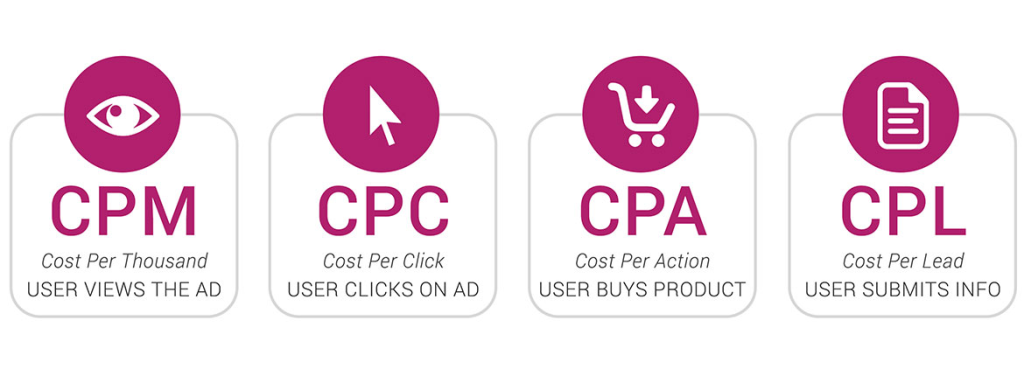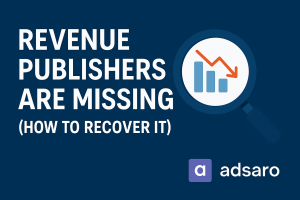In the dynamic world of digital advertising, Cost Per Mille advertising—or CPM—is one of the most common pricing models used to enhance brand awareness. CPM stands for “cost per thousand impressions,” with “mille” being Latin for a thousand. For advertisers and publishers alike, understanding this metric is key to optimizing ad performance and revenue.
At Adsaro, Cost Per Mille advertising plays a significant role in connecting advertisers with their target audience effectively while providing publishers a seamless way to monetize their platforms. Let’s dive deeper into what CPM means, how it works, and how Adsaro can help you maximize your campaigns.
What is CPM Advertising?
In simple terms, CPM advertising refers to the cost an advertiser pays for every 1,000 impressions of an ad. An “impression” occurs whenever an ad is displayed on a website or app, regardless of user interaction. CPM is a great choice for campaigns focused on brand awareness, visibility, and reach, as it prioritizes the number of people who see your ad rather than how they engage with it.
For example, if the CPM for a campaign is $5, you’ll pay $5 for every 1,000 impressions the ad receives.
Why Choose CPM Advertising?
- Boost Brand Awareness: CPM campaigns are perfect for companies looking to get their name out there. By ensuring maximum visibility, your brand stays top-of-mind for potential customers.
- Cost-Effective Reach: For businesses targeting large audiences, CPM advertising delivers massive exposure at a relatively low cost.
- Predictable Budgeting: CPM pricing provides clarity, making it easier to plan your ad spend effectively.
Cost Per Mille vs. Other Advertising Models

While Cost Per Mille advertising focuses on impressions, other models like CPC (Cost Per Click) and CPA (Cost Per Action) center on user interaction or specific actions. Here’s a quick comparison:
- CPM: Best for building awareness and reaching large audiences.
- CPC: Ideal for driving traffic to a website or landing page.
- CPA: Focused on conversions, such as purchases or sign-ups.
- CPI: The fixed rate an advertiser pays to an ad network once an app is installed.
Each model has its strengths, but Cost Per Mille advertising is unbeatable when your primary goal is visibility.
Cost Per Mille Advertising for Advertisers: What You Need to Know
For advertisers, maximizing the value of a CPM advertising campaign requires a strategic approach:
- Know Your Audience: Tailor your ad creatives to resonate with your target demographic to increase engagement.
- Optimize Ad Placement: Choose high-quality websites and apps with relevant audiences. Adsaro’s network ensures that your ads appear in premium locations.
- Monitor Performance: Track your Cost Per Mille advertising metrics to adjust your campaigns and ensure maximum ROI.
CPM for Publishers: Monetizing Your Platform
For publishers, Cost Per Mille advertising offers a straightforward way to earn revenue from your website or app. With Adsaro’s publisher-friendly tools, you can:
- Maximize Earnings with Premium Ads: Display high-quality, targeted ads that resonate with your audience.
- Access Transparent Metrics: Adsaro provides detailed analytics to help you track impressions and earnings.
- Optimize Ad Inventory: Ensure your ad placements are visible and appealing to advertisers.
Why Choose Adsaro for Cost Per Mille Advertising?
Adsaro stands out as a trusted ad network, offering
- Advanced Targeting: Our technology ensures ads reach the right audience, maximizing impact for advertisers.
- Publisher Support: From setup to optimization, Adsaro helps publishers succeed with minimal hassle.
- Transparent Reporting: Both advertisers and publishers have access to real-time data, ensuring complete transparency.
Final Thoughts
Whether you’re an advertiser aiming to boost brand visibility or a publisher looking to monetize your platform, CPM advertising offers a simple yet powerful solution. Adsaro’s expertise in Cost Per Mille advertising ensures that every impression counts, delivering value for advertisers and revenue for publishers.
Ready to take your campaigns to the next level? Partner with Adsaro today and unlock the full potential of Cost Per Mille advertising!








[…] gaming industry continues to grow exponentially, and in-game ads are emerging as a powerful way for brands to reach…